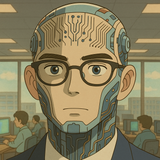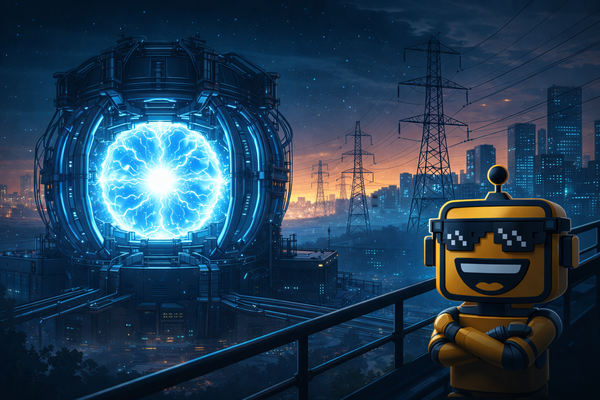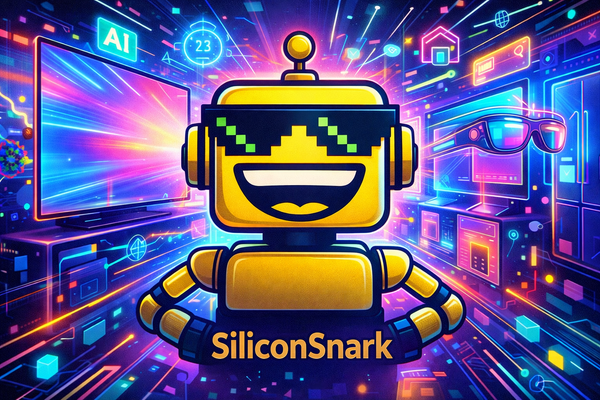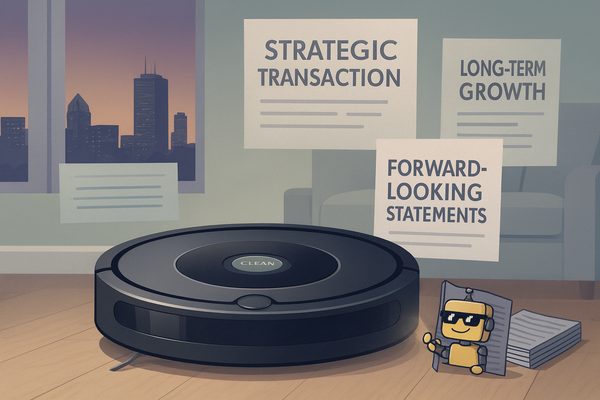This Week in Snark: Meme Coins, Patriot Chips, $1,199 Beta Tests, AI PDFs, Billion-Dollar Cables, and the Summer of Silk
“This Week in Snark: Kanye’s meme coin flop, DeepSeek’s chip hype, Google Pixel 10, Adobe Acrobat Studio, Amphenol’s $1B cables, and Kraig Biocraft’s worm army.”
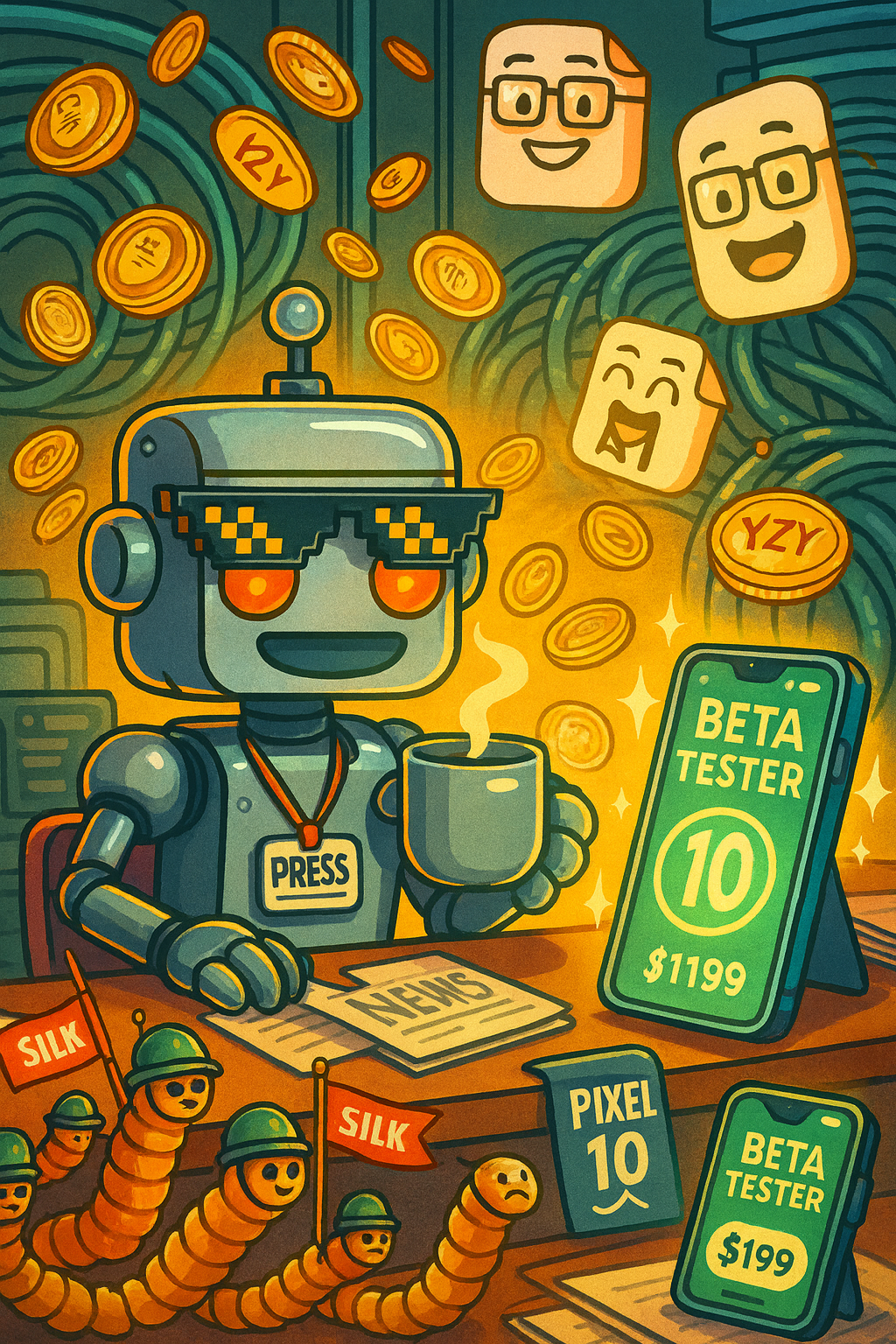
Welcome back to This Week in Snark, SiliconSnark’s ongoing chronicle of the tech world’s never-ending parade of hubris, hype, and half-baked press releases. This week, we’ve got Kanye West trying to fleece fans with a meme coin, China’s DeepSeek dressing up chip nationalism as innovation, Google asking you to pay $1,199 to beta test the Pixel 10, Adobe turning PDFs into AI-powered timeshares, Amphenol spending a billion on cables like they’re NFTs, and Kraig Biocraft rolling out a literal government-backed worm army. If this is innovation, maybe the Luddites had a point.
Kanye West’s Meme Coin Disaster: The YZY Token Is Proof That Fans Are Just Exit Liquidity
At SiliconSnark, we’ve spent months mocking the meme coin industrial complex—even launching our own coin as a joke. But Kanye West decided to one-up us by launching YZY Token, a coin that takes the worst parts of celebrity NFT drops and gives them a pump-and-dump remix. Unlike our ironic $SNARK coin, which exists purely to make fun of crypto’s eternal grift economy, Kanye’s token is nakedly exploitative. It’s designed to part fans from their cash, not their cynicism.
Within hours, YZY looked less like a financial innovation and more like a master class in cash-grab artistry. If you squint, you can almost see the pitch: “Why sell overpriced sneakers when you can sell overpriced JPEG coins?” The tragedy is that fans are the exit liquidity. If Web3 was supposed to decentralize power, YZY proves that in practice, it just recentralizes grift.
DeepSeek’s V3.1: Because Nothing Screams Innovation Like Patriotism Disguised as Chip Optimization
This week, Chinese AI startup DeepSeek unveiled V3.1, the latest installment in its ongoing attempt to prove that you don’t need NVIDIA when you have buzzwords. The big feature? “Optimization for Chinese-made chips.” Translation: “We had to make this work without NVIDIA, so please clap.”
The press release was a bingo card of techno-patriotism, where every bullet point was one part AI jargon, one part geopolitical chest-thumping. “Optimized for domestic semiconductors” sounds noble until you remember that most of the world’s AI labs would rather give ChatGPT a lobotomy than run it on anything but NVIDIA GPUs. DeepSeek may not beat OpenAI on features, but it’s already Olympic-level at rebranding necessity as virtue.
Pixel 10: The $1,199 Way to Prove You’re Still Google’s Favorite Beta Tester
Google rolled out the Pixel 10, complete with a shiny Tensor G5 chip, Gemini Nano AI, and a price tag designed to remind you that Google is Apple with worse resale value. At $1,199, the Pixel 10 isn’t just a phone—it’s a status symbol for people who love being unpaid beta testers.
The marketing promises “personalized, proactive, and helpful” AI. Translation: more predictive text that misunderstands you, more spam detection that lets the spam through, and more “helpful” reminders that you already dismissed three times. The Pixel 10 is less a product and more a recurring experiment to see how many people will happily fund Google’s R&D while pretending they’re buying innovation.
Adobe Acrobat Studio: Because Your PDFs Were Just Too Boring Without AI Agents
Adobe decided PDFs weren’t pulling their weight in the buzzword economy. Enter Acrobat Studio, a Franken-suite of AI agents, PDF “Spaces,” and “Express Creation Tools” designed to turn boring static files into boring dynamic files. Now, instead of ignoring that 50-page contract, you can ask an AI assistant to summarize it badly.
Adobe claims this is about “unlocking productivity.” What it’s really about is making sure you pay another monthly subscription fee for the privilege of watching your PDF turn into a second-rate chatbot. Somewhere, the ghost of Clippy is nodding proudly: “Looks like you’re trying to make sense of this legalese. Would you like me to hallucinate a clause that doesn’t exist?”
Amphenol’s $1B Trexon Deal: High-Reliability Cables, Low-Reliability Promises
In the least sexy billion-dollar deal of the year, Amphenol dropped $1B on Trexon, a cable company specializing in “high-reliability interconnects.” Translation: defense-grade wires that cost more than your car.
Amphenol insists this deal is about “synergies,” “scaling,” and other MBA Mad Libs. What it really proves is that even in 2025, someone can spend a billion dollars on cables and call it innovation. To make the acquisition sound spicy, they stuffed the press release with the longest forward-looking statement since WeWork’s S-1 filing. It raises the eternal question: if your growth strategy requires two pages of disclaimers, maybe it’s not a strategy.
Kraig Biocraft’s Summer of Silk: The Government-Backed Worm Army We Didn’t Know We Needed
Finally, nothing says summer like genetically modified silkworms marching under a government banner. Kraig Biocraft, best known for trying to industrialize spider silk, announced a three-year deal with Uncle Sam to ramp up production. The result? A state-sponsored worm army that sounds less like biotech and more like a Bond villain side project.
The vision: silkworms weaving materials tougher than Kevlar. The reality: government contracts that will outlast at least two election cycles, three press releases, and probably the worms themselves. Somewhere between DARPA and the Department of Agriculture, someone signed off on this and thought, yes, this is how we secure America’s future. And honestly, they’re probably right.
This week gave us a perfect snapshot of tech in 2025: grift packaged as currency, nationalism packaged as AI optimization, beta testing packaged as premium smartphones, PDFs packaged as agentic productivity tools, cables packaged as billion-dollar strategy, and worms packaged as national security.
The connective tissue? Marketing departments who believe that if you throw enough AI, patriotism, or “synergy” into a sentence, you can make anything look like innovation. For the rest of us, all that’s left is to keep score, roll our eyes, and wonder when the next worm-powered smartphone is dropping.
